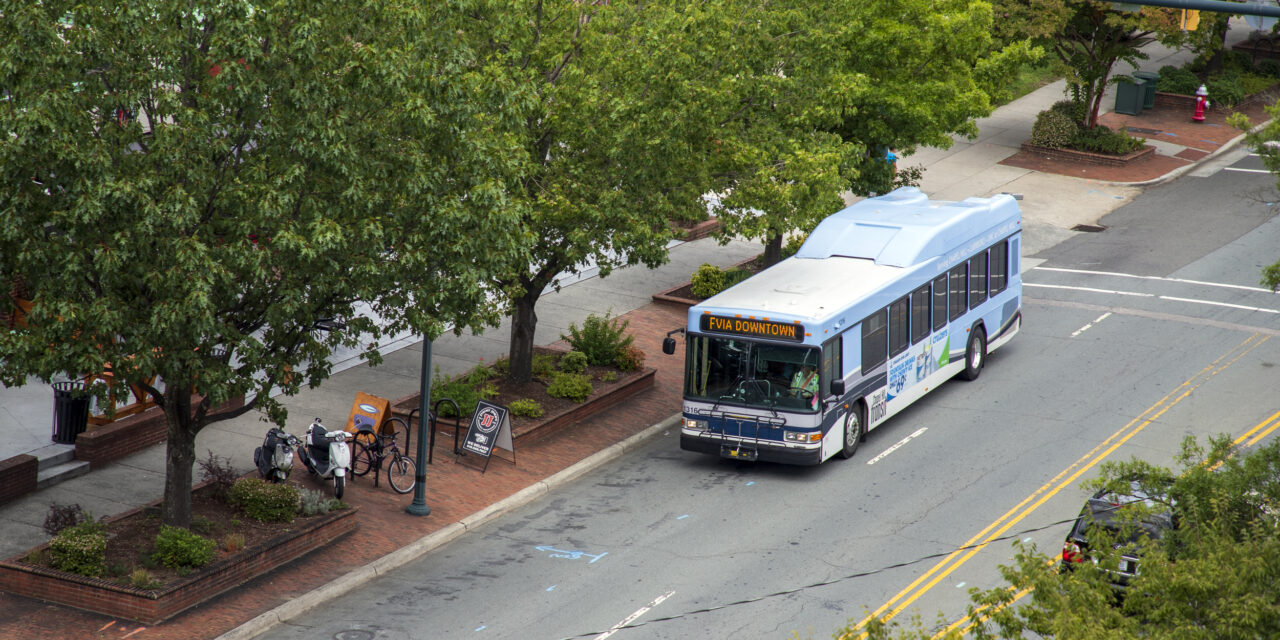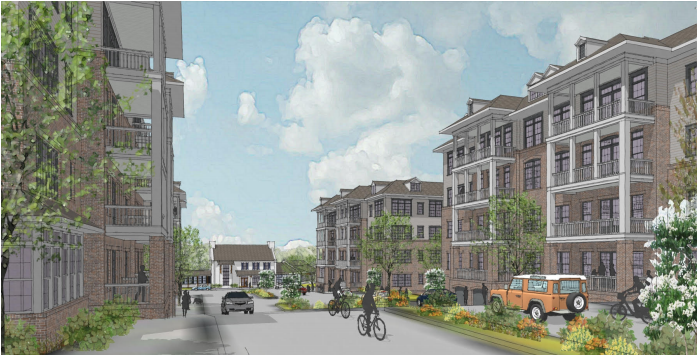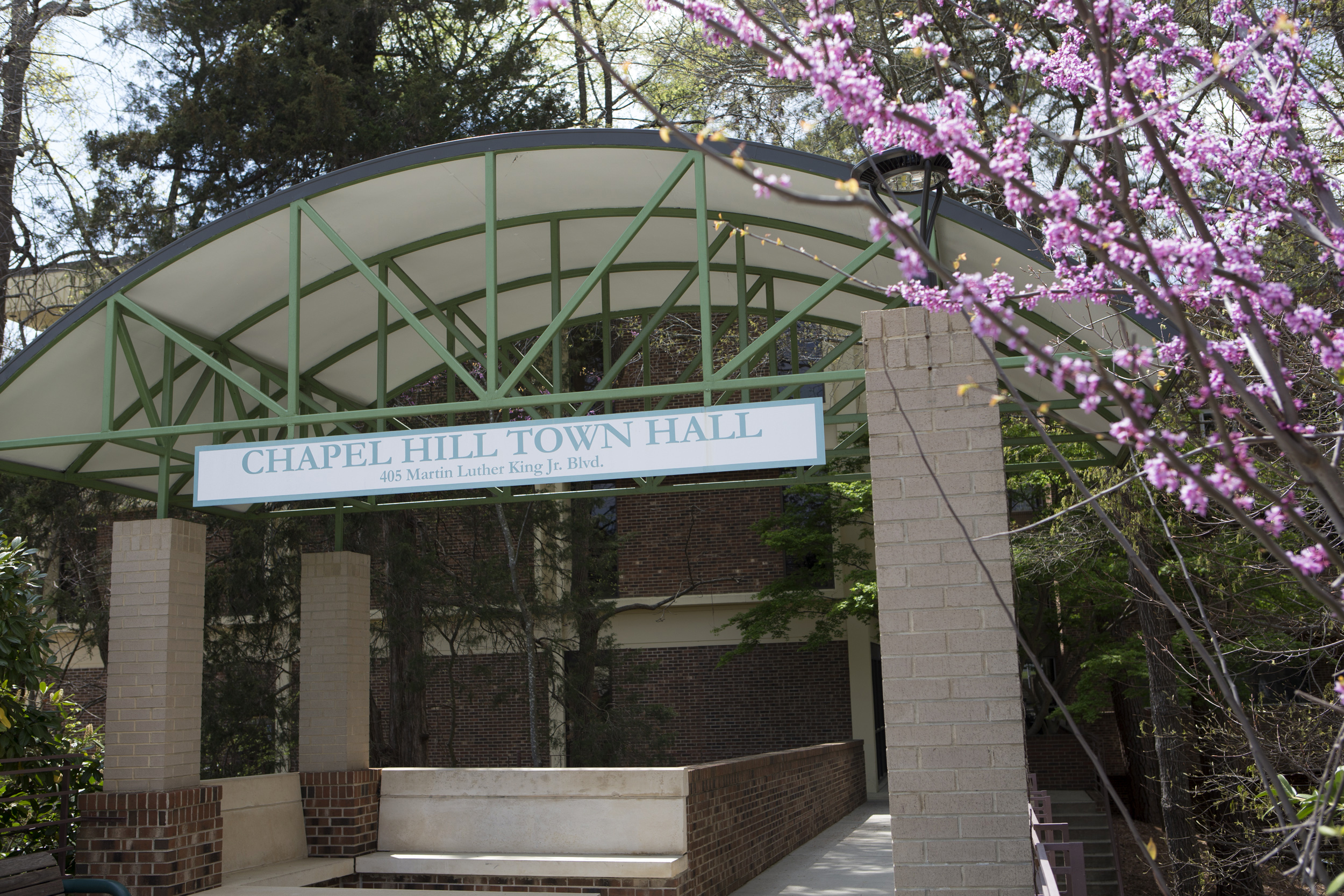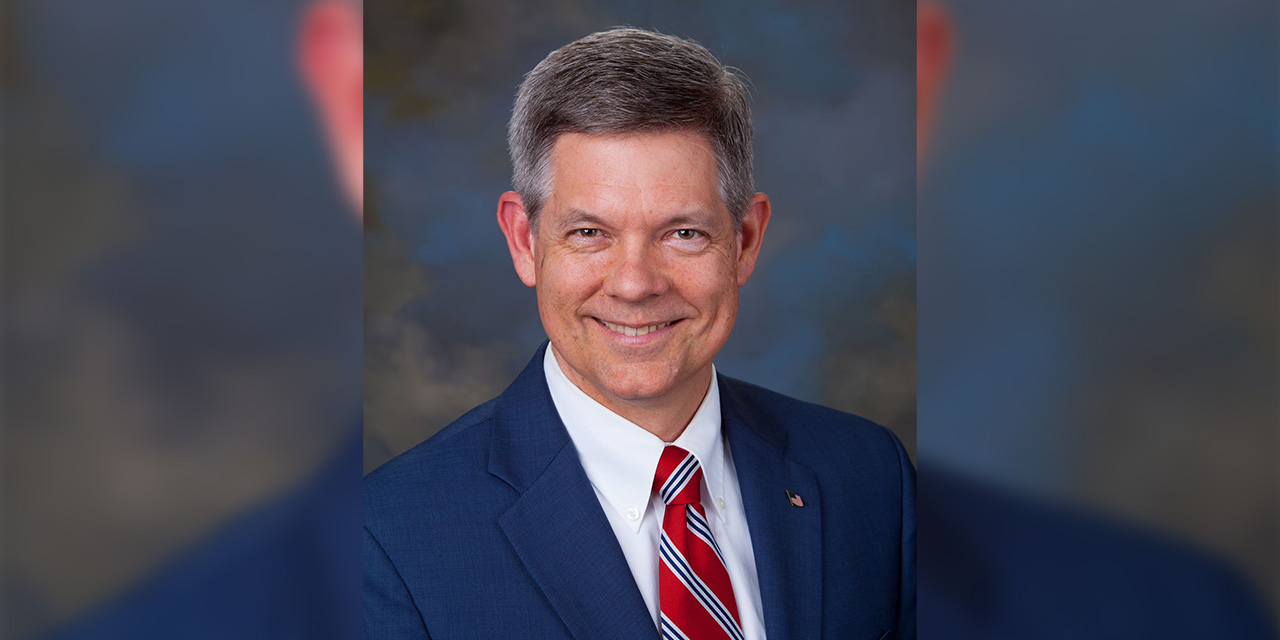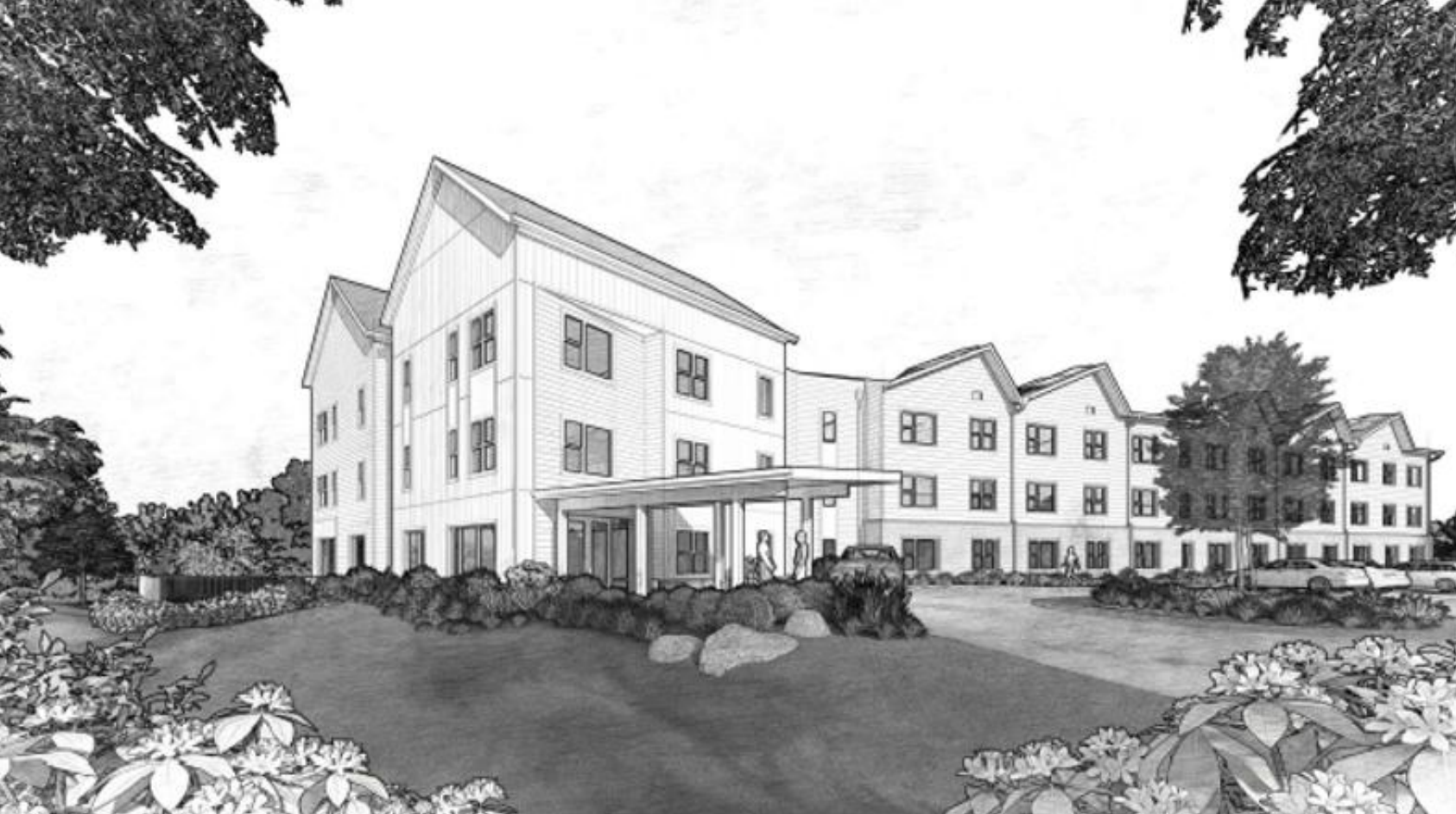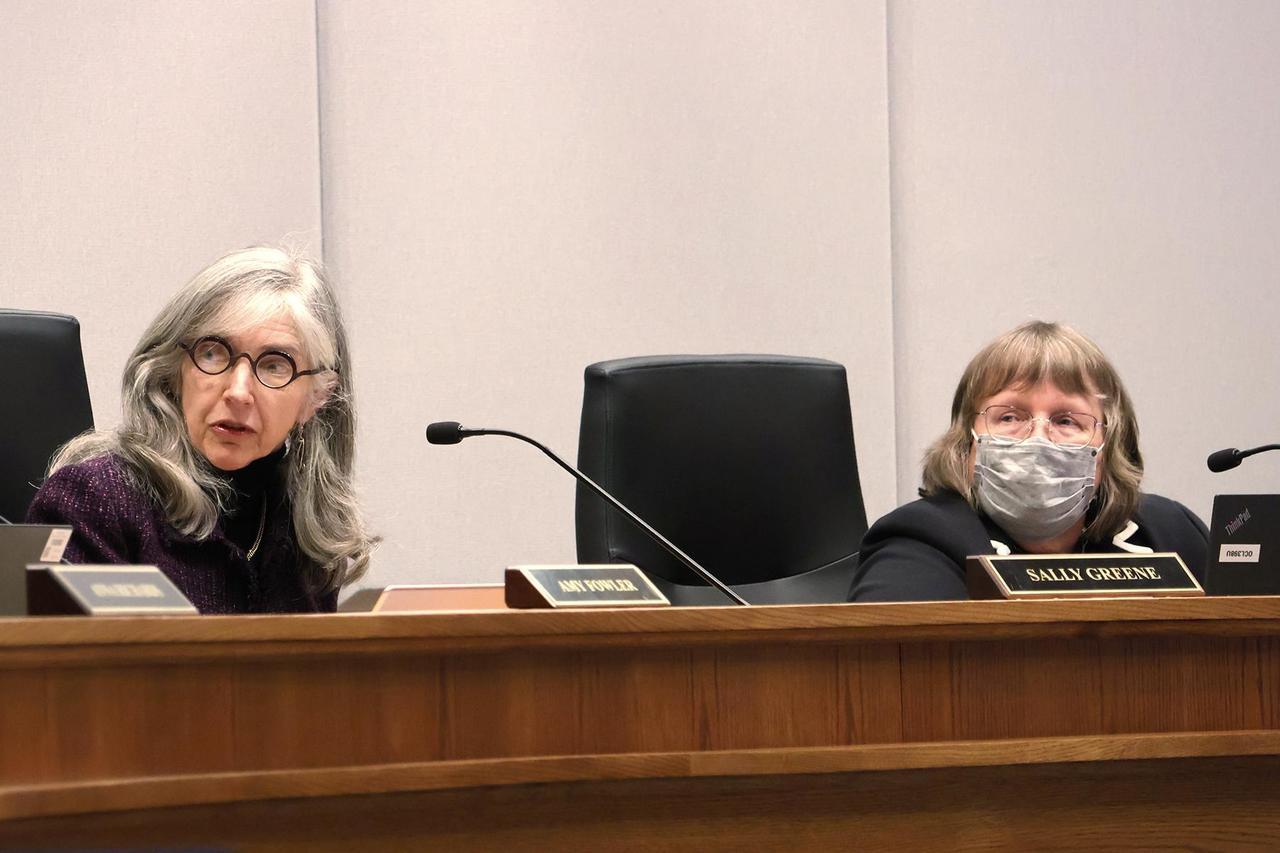The Chapel Hill Town Council received an update on the North-South Bus Rapid Transit (NSBRT) project on Wednesday.
NSBRT aims to implement 8.2 miles of uninterrupted bus transit along Martin Luther King Jr. Boulevard, South Columbia Street, and US 15-501 South. It will add multi-use transportation along the route with a completed sidewalk network and enhanced pedestrian crossing. The project also consists of 14 electric buses which will arrive at each stop in seven-minute intervals and will be fare-free, consistent with the current Chapel Hill Transit (CHT) bus system. After an initial feasibility study was conducted in 2012, plans for NSBRT have been in the development and environmental review phase since 2016. Recently, the design progressed to the station design and engineering work phase.
Chapel Hill Transit Planning Manager Caroline Dwyer presented updates to the town council. She spoke on the importance of building public transit along the designated route.
“It is our busiest transit corridor both in terms of vehicles, trips, riders,” said Dwyer. “It is consistently among probably one of the highest transit ridership routes in the state, and that is what makes it such a great candidate for this investment in Chapel Hill.”
“Because it has such great transit service,” she continued, “there’s already a lot of people living and working and recreating along this corridor. So, there’s a lot of activity bringing people to and from this location which provides the activity needed to support a transit project like this.”
Chapel Hill is following the Federal Transit Administration’s (FTA) capital investment program and is subject to their review to ensure that the town is meeting assessment milestones. The town must continue to meet these milestones to secure federal funding for the project.
The total funding breakdown of NSBRT includes 70.7 percent federal funding, 19.3 percent state funding, and 10 percent local funding. Much of the federal funding is contingent on whether President Biden’s budget this year includes Congressional allocation for NSBRT, and whether Congress subsequently passes a budget with such funding. Dwyer also spoke to the town’s goal of securing state and federal funding to alleviate the burden of local funding.
“Next year, hopefully, we’ll hear something about state funding,” she said, “so there may be some opportunities to recoup some of the local costs through the county transit tax that are being used, and finalize all of those local funding commitments. And then that would position us to use the FTA Small Starts Grant Agreement in 2026 and move into construction.”
The project has faced several financial challenges since its funding assumption conducted in 2021. While presenting to the town council last July, Chapel Hill Transit Director Brian Litchfield cited increases in construction costs, transit costs, and inflation as financial hurdles. In response to these challenges, several cost-saving changes were adopted including changing the multi-use path from being developed on both sides of the street to one side.
In following FTA guidelines, NSBRT is currently in the “60 percent phase” which includes station design and engineering. Expressed goals for the stations’ design include enhancing the community character of Chapel Hill, ensuring accessibility, and creating a recognizable NSBRT brand. Dwyer also noted that the station design elements incorporate a “kit of parts,” meaning that materials used to design the stations can be easily replaced when maintenance is required. This falls in line with the project’s goal of minimizing maintenance and operational challenges and costs.
Litchfield responded to Council Member Amy Ryan’s question about what potential facility adjustments will be required for CHT to account for the new buses. Though Litchfield said that Chapel Hill would aspire to receive funding for a new facility to park the buses, it will not be able to do so until after there are “design-ready” plans for that facility.
“As we shared with council when we did the council plan,” said Litchfield, “we have secured grant funding that will take us up to 90 percent design plans for that, and then once that’s done, we’d be able to go after additional federal and state funding to pay for that. So, that funding, if you don’t have design-ready plans, there’s really no use in submitting those grant requests or even really spending much time talking about it.”
If the project continues along its timeline, construction will begin in 2027 with an expected launch in 2029.
To watch the full meeting from January 24, click here.
Photo via the Town of Chapel Hill.
Chapelboro.com does not charge subscription fees, and you can directly support our efforts in local journalism here. Want more of what you see on Chapelboro? Let us bring free local news and community information to you by signing up for our biweekly newsletter.

